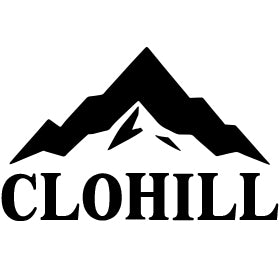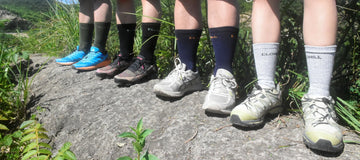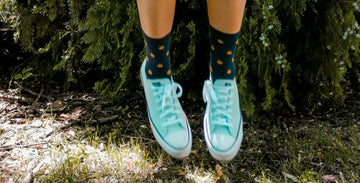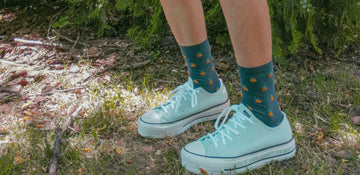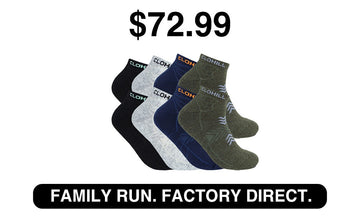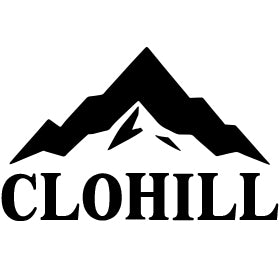When it comes to hiking gear, socks are often the last thing on a trekker’s mind—yet they can make or break your trail experience. Choosing between Alpaca vs Merino Wool Socks isn’t just a matter of comfort; it’s a performance decision. In this guide, you’ll see why alpaca socks are rapidly becoming the go‑to choice for serious hikers, and how they stack up against traditional merino wool.
A Deep Dive into Merino Wool vs Alpaca Fiber
When it comes to natural animal fibers used in high-performance socks, Merino wool and alpaca stand out as top contenders. Both offer excellent moisture-wicking, insulation, and breathability, but they differ significantly in fiber structure, origin, performance, and ideal use cases. Here's a detailed comparison of these two remarkable fibers:
Merino Wool
Merino wool is primarily sourced from Australia, New Zealand, and South Africa—with Australia contributing over 70% of the global supply. Thanks to its abundant annual yield, Merino wool is the backbone of the premium wool industry worldwide. Merino sheep thrive in temperate grassland climates with cool, dry conditions and large temperature fluctuations.
Merino fibers typically range between 18–28 microns in diameter, making them ultra-fine and soft to the touch. Their natural crimp provides elasticity and a snug fit, which enhances comfort during intense activities. Merino wool is also highly breathable and moisture-wicking, making it ideal for activewear. While its keratin coating provides some antimicrobial and odor-resistant properties, Merino wool can struggle in extreme heat or humidity.
Alpaca
Alpaca fiber is primarily harvested in South America, especially in Peru, Bolivia, and Chile. Peru leads the global market, supplying over 80% of all alpaca fiber. Alpacas are native to the high-altitude Andes Mountains, where they thrive in cold, dry conditions with significant daily temperature shifts and thin air. Compared to Merino wool, alpaca is far rarer, making it one of the most luxurious natural fibers available.
Alpaca fibers generally measure between 14–26 microns in diameter, but their standout feature is their naturally hollow core. This unique structure traps and retains body heat more efficiently while remaining lightweight. Alpaca also excels at moisture management, keeping feet dry and warm without bulk. Unlike sheep’s wool, alpaca contains no lanolin, making it hypoallergenic and ideal for sensitive skin. Its superior antimicrobial properties also offer better odor control.
| Feature | Merino Wool | Alpaca Wool |
|---|---|---|
| Fiber Structure | Densely crimped, slightly coarse | Hollow-core, ultra-fine, soft |
| Warmth | Good | Excellent (warmer for the same weight) |
| Moisture Management | Very good | Good (moisture-wicking without water retention) |
| Odor & Bacteria Control | Moderate (often requires chemical treatment) | Naturally strong antibacterial properties |
| Sensitive Skin Friendly | Average | Excellent (lanolin-free and hypoallergenic) |
| Weight | Moderate | Lighter |
| Pilling/Shape Retention | Prone to pilling, shorter lifespan | Minimal pilling, highly durable and washable |
Temperature Regulation
During hiking, trekking, or camping, temperatures can swing dramatically between day and night—chilly mornings, blazing hot afternoons, and cold evenings. That’s why socks with reliable temperature regulation are essential.
Merino wool, with its naturally crimped fiber structure, traps air to provide basic insulation and breathability. It performs well in cool to mildly cold environments and helps regulate body temperature by wicking away moisture. For short to moderate hikes, Merino is a solid choice.
Alpaca, however, features a naturally hollow-core fiber that provides superior insulation by trapping more air and retaining heat more efficiently. At the same time, it remains breathable and does not trap moisture. These performance benefits stem from the alpaca’s adaptation to the extreme Andean highlands. For hikers navigating challenging terrains or camping over several days, alpaca socks offer more stable and responsive thermal regulation.
Moisture-Wicking & Drying Speed
Moisture management can make or break your hiking experience. Wet socks lead to discomfort, blisters, odor, and even fungal infections.
Merino wool is known for its impressive moisture-wicking capability—it can absorb up to 30% of its weight in water. However, its tightly woven structure tends to hold onto that moisture, which slows down drying. On extended hikes or in humid conditions, Merino socks can begin to feel damp and heavy.
Alpaca fiber, thanks to its hollow-core structure, quickly wicks sweat away from your feet and releases it efficiently. Even in wet environments, alpaca socks keep your feet dry and comfortable, minimizing stickiness and overheating. This makes them ideal for long-distance treks or multi-day adventures.
Odor Resistance & Antibacterial Properties
Long days on the trail often mean wearing the same socks for extended periods. Sweat, heat, and friction create the perfect environment for bacterial growth and foot odor.
Merino wool contains natural keratin that offers a basic level of antibacterial protection. However, its slower drying time can allow moisture to linger, leading to odor after one or two days of wear.
Alpaca, on the other hand, is naturally hypoallergenic and highly resistant to bacteria and odor. Its hollow fibers expel moisture more quickly, keeping the feet dry and less hospitable to bacteria. Even after 2–3 days of continuous wear, alpaca socks remain fresh and odor-free—a clear advantage for serious hikers.
Durability: Holding Up to the Demands of the Trail
Outdoor socks endure constant friction, stretching, and exposure to sweat. Durability directly impacts not just comfort but also safety on the trail.
Merino wool fibers are fine and crimped, delivering a soft feel but lower tensile strength. Over time, they are more prone to pilling, thinning, and distortion—especially in high-stress areas like the heel and forefoot.
Alpaca fiber offers more durability due to its hollow-core architecture, which gives it enhanced elasticity and structural resilience. The smoother surface and lower keratin content make alpaca more resistant to abrasion and pilling. Even after repeated wear and machine washing, alpaca socks maintain their shape, structure, and function, making them a more long-lasting option for active hikers.
Clohill Alpaca Socks: Built for the Trail
Clohill alpaca socks are engineered for long-distance, high-intensity hiking. We source only premium alpaca fibers from the Andes Mountains to craft lightweight, breathable, and thermally adaptive socks. Whether you're pushing through steep inclines or navigating humid forests, Clohill socks wick away sweat fast—reducing the risk of blisters and discomfort.
Our exclusive Dynamic Arch Support System provides anatomical stability through 3D-knit compression zones, reducing foot fatigue and supporting long-haul performance. Targeted cushioning in the heel and forefoot absorbs shock where you need it most, extending your walking comfort mile after mile.
For true adventurers, there’s no room for compromise. Every stitch and fiber in Clohill alpaca socks is designed for one purpose: performance on the trail. Whether you're scaling snow-capped peaks or hiking through rugged terrain, trust Clohill for professional-grade support.
🧦 Explore the full Clohill Alpaca Sock Collection
The Future of Hiking Socks is Alpaca
If you’re looking for an all-season sock that can handle temperature swings, keep your feet dry, and stay fresh for days—alpaca is the future.
Instead of suffering through sweaty feet, blisters, and odor, upgrade your hiking gear with the one piece that makes the biggest difference: a pair of best alpaca socks.
